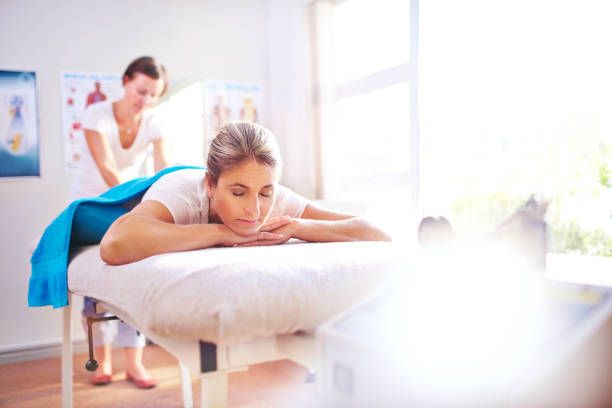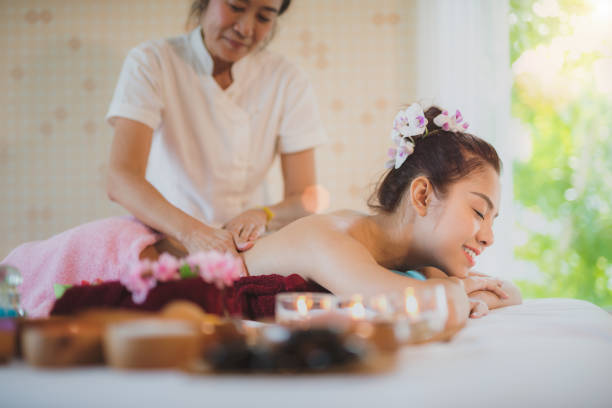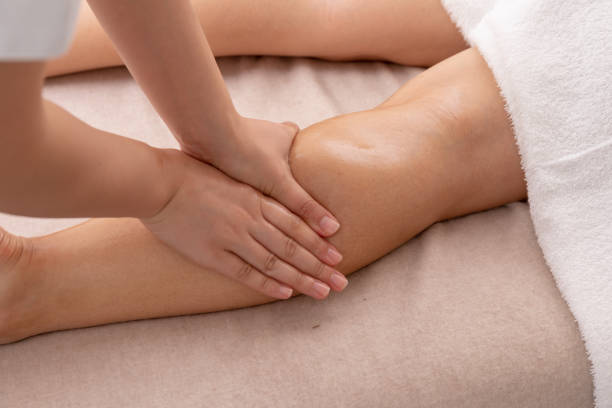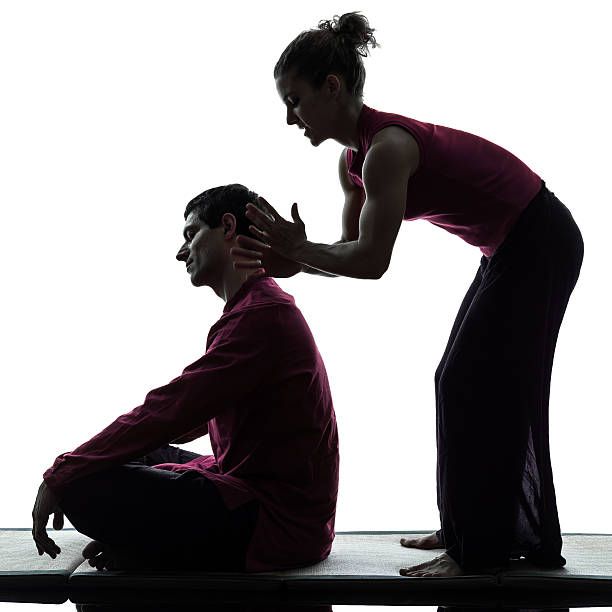I. Introduction
Full Body Massage – In today’s fast-paced world, finding moments of relaxation and tranquility is essential for maintaining overall well-being. One of the most effective ways to achieve this state of relaxation is through the practice of full-body massage. In this comprehensive guide, we will explore the rich history of massage therapy, delve into the various benefits it offers, learn about different massage techniques, and discover how to incorporate self-care routines into our lives.
II. Historical Background of Massage
Throughout history, massage therapy has been a cherished practice in various cultures around the world. Ancient civilizations like China, Egypt, and India recognized the healing power of touch. The art of massage has evolved over centuries, blending techniques and traditions to create the diverse array of practices we have today.

III. Benefits of Full Body Massage
Stress Relief and Relaxation
Full body massage provides a sanctuary from the pressures of daily life. The soothing touch of a skilled massage therapist helps release tension, calming the mind and body. It promotes relaxation, allowing stress to melt away.
Pain Relief and Improved Flexibility
Through targeted manipulation of muscles and joints, massage therapy alleviates pain caused by injuries, strains, or chronic conditions. It enhances flexibility, making daily movements more accessible and more comfortable.
Enhanced Blood Circulation and Lymphatic Drainage
Massage stimulates blood flow and lymphatic circulation, aiding the body in removing toxins and waste. Improved circulation boosts overall health, supporting the body’s natural healing processes.
Boosted Immune System and Detoxification
Regular massage enhances the immune system’s functionality, helping the body fend off illnesses. Additionally, it aids in detoxification by promoting the elimination of waste and impurities.
Improved Sleep Quality
Massage encourages deep relaxation, often leading to better sleep. Quality sleep is crucial for overall health, contributing to physical and mental restoration.
Emotional and Mental Well-being
Massage therapy triggers the release of endorphins, the body’s natural feel-good chemicals. It reduces anxiety, depression, and stress, promoting a positive outlook on life.

IV. Types of Full Body Massage Techniques
Swedish Massage: Gentle Relaxation and Stress Reduction
Swedish massage involves long gliding strokes, kneading, tapping, and gentle stretching. It is perfect for those seeking relaxation and stress reduction.
Deep Tissue Massage: Targeted Muscle and Joint Relief
Deep tissue massage focuses on deeper layers of muscles and connective tissues. It is beneficial for chronic pain, muscle tension, and injury recovery.
Shiatsu Massage: Balancing Body’s Energy Flow
Originating from Japan, Shiatsu massage applies pressure to specific points on the body, balancing the body’s energy flow. It promotes relaxation and overall well-being.
Thai Massage: Assisted Stretching and Yoga-Like Poses
Thai massage combines assisted yoga-like stretches with massage techniques. It enhances flexibility, relieves muscle tension, and promotes energy flow.
Hot Stone Massage: Deep Muscle Relaxation through Heat Therapy
Hot stone massage involves the use of heated stones placed on the body. The warmth relaxes muscles, allowing the therapist to work more deeply. It provides deep relaxation and relieves muscle stiffness.
Aromatherapy Massage: Benefits of Essential Oils in Massage
Aromatherapy massage incorporates essential oils, enhancing the therapeutic effects of the massage. Different oils offer various benefits, such as relaxation, stress relief, or energizing effects.

V. How to Prepare for a Full Body Massage
Pre-massage Tips: Hygiene, Comfort, and Communication with the Masseur/Masseuse
Before your massage, ensure you are clean and comfortable. Communicate your preferences, such as areas to focus on or avoid. Open communication enhances the massage experience.
What to Expect During the Massage Session: Environment, Techniques, and Duration
During the session, you will be in a peaceful environment, lying on a comfortable massage table. The therapist will use various techniques tailored to your needs, ensuring a relaxing experience. Sessions typically last 60 to 90 minutes, providing ample time for the therapist to address your concerns.
Post-massage Care: Hydration, Rest, and Avoiding Strenuous Activities
After your massage, drink plenty of water to aid in the elimination of toxins. Rest and allow your body to absorb the therapeutic benefits fully. Avoid strenuous activities to prolong the relaxation effects.
VI. Massage and Self-Care: Tips for At-Home Techniques
Introduction to Self-Massage Techniques
Self-massage is a valuable skill that allows you to relax and relieve tension at your convenience. Learning simple techniques empowers you to manage stress and promote well-being.
Demonstrations and Step-by-Step Guides for Self-Massage of Different Body Parts (Neck, Shoulders, Back, Legs, etc.)
Explore specific self-massage techniques for different body parts. Follow step-by-step guides and demonstrations to ease tension and enhance relaxation.
Recommended Oils and Lotions for Self-Massage
Selecting the suitable oils or lotions enhances the benefits of self-massage. Choose natural products with soothing properties, promoting relaxation and skin nourishment.
Importance of Breathing and Mindfulness in Self-Massage
Integrate mindful breathing into your self-massage routine. Focus on your breath, inhaling calmness and exhaling tension. Mindfulness amplifies the therapeutic effects of self-massage, promoting holistic well-being.

VII. Massage and Mental Health
Connection between Massage Therapy and Reduced Anxiety
Massage therapy reduces anxiety by calming the nervous system. The gentle touch and rhythmic movements promote a sense of security and tranquility.
Role of Massage in Managing Depression and PTSD
Massage helps manage symptoms of depression and post-traumatic stress disorder (PTSD). It provides emotional comfort and relaxation, supporting mental health recovery.
How Massage Can Improve Overall Mental Well-being
Regular massage contributes to improved mental well-being by reducing stress, anxiety, and depression. It enhances emotional resilience, promoting a positive mindset and better coping mechanisms.
VIII. Massage for Special Populations
Massage for Pregnant Women: Prenatal and Postnatal Benefits
Prenatal massage alleviates pregnancy discomfort, reducing back pain and swelling. Postnatal massage aids in recovery, promoting relaxation and stress relief for new mothers.
Massage for Seniors: Addressing Age-Related Aches and Pains
Massage therapy for seniors targets age-related issues such as arthritis and stiffness. Gentle techniques improve mobility and provide relief from aches and pains, enhancing overall quality of life.
Massage for Athletes: Enhancing Performance and Reducing Injuries
Athletes benefit from massage to enhance flexibility, prevent injuries, and promote faster recovery. Sports massage targets specific muscle groups, improving performance and reducing muscle soreness.
Massage for Individuals with Chronic Conditions: Arthritis, Fibromyalgia, etc.
Massage therapy offers relief to individuals with chronic conditions. It reduces pain, improves joint mobility, and enhances overall well-being for those managing conditions like arthritis and fibromyalgia.
IX. Ethics and Safety in Full Body Massage
Importance of Professionalism and Ethical Practices in Massage Therapy
Professionalism and ethics are paramount in massage therapy. Practitioners adhere to strict codes of conduct, ensuring a safe and respectful environment for clients.
Ensuring Client Comfort and Safety: Proper Draping, Hygiene, and Boundaries
Clients’ comfort and safety are top priorities. Proper
FAQs About Full Body Massage
1. What are the different types of full-body massage techniques and their benefits?
Answer: Full body massage techniques include Swedish, deep tissue, Shiatsu, Thai, hot stone, and aromatherapy massages. Each method offers unique benefits such as relaxation, pain relief, improved flexibility, enhanced circulation, and emotional well-being.
2. How often should I get a full body massage for optimal relaxation and well-being?
Answer: The frequency of massages depends on individual preferences and needs. Some people benefit from a monthly massage for relaxation, while others with specific conditions might require more frequent sessions. It’s essential to listen to your body and consult with a massage therapist for personalized recommendations.
3. Is full body massage suitable for individuals with specific health conditions or injuries?
Answer: Yes, full-body massage can be adapted to address various health conditions and injuries. However, it’s crucial to inform your massage therapist about your specific concerns so they can tailor the session to your needs, ensuring a safe and practical experience.
4. What can I expect during a professional full-body massage session, and how long does it typically last?
Answer: During a professional full-body massage, you can expect a peaceful environment, soothing music, and skilled techniques applied by a trained therapist. The session typically lasts between 60 to 90 minutes, allowing the therapist to address your specific concerns and provide a comprehensive massage experience.
5. Are there any specific precautions or preparations I should take before getting a full-body massage?
Answer:
- Before your massage session, ensure you are clean and comfortable.
- Communicate your preferences and any health concerns to your therapist.
- Avoid heavy meals and alcohol before the session. Stay hydrated with water.
6. Can pregnant women benefit from prenatal or postnatal massage therapy, and are there any risks involved?
Answer: Yes, prenatal and postnatal massage therapy can provide significant benefits to pregnant women, including reduced back pain, improved sleep, and stress relief. However, it’s essential to consult a certified prenatal massage therapist and inform them about your pregnancy to ensure a safe and comfortable experience.
7. Is self-massage as effective as professional massage therapy, and what are some recommended techniques for at-home relaxation?
Answer: While self-massage may not replace the expertise of a professional therapist, it can be highly effective for relaxation and stress relief. Recommended techniques include gentle strokes, kneading, and applying pressure to specific points, focusing on areas with tension or discomfort.
8. Are there any essential oils or lotions recommended for enhancing the benefits of self-massage?
Answer: Essential oils enhance self-massage. Dilute them in coconut or jojoba oil for a soothing massage.
9. How does massage therapy contribute to mental health, particularly in managing stress, anxiety, and depression?
Answer: Massage therapy promotes the release of endorphins, reducing stress, anxiety, and depression. The calming effect of touch and the relaxation response from massage contribute to improved mental well-being and emotional balance.
10. What ethical considerations and safety measures should I be aware of when choosing a massage therapist or spa for a full-body massage session?
Answer: When choosing a massage therapist or spa, ensure they are licensed, certified, and adhere to professional ethics. Proper draping, hygiene, and clear communication are essential. Trust your instincts and choose a reputable practitioner or establishment with positive reviews and a commitment to client safety and satisfaction.
Read also.. “Protein Foods: Mastering the Nutritional Balance for Health and Wellness”

